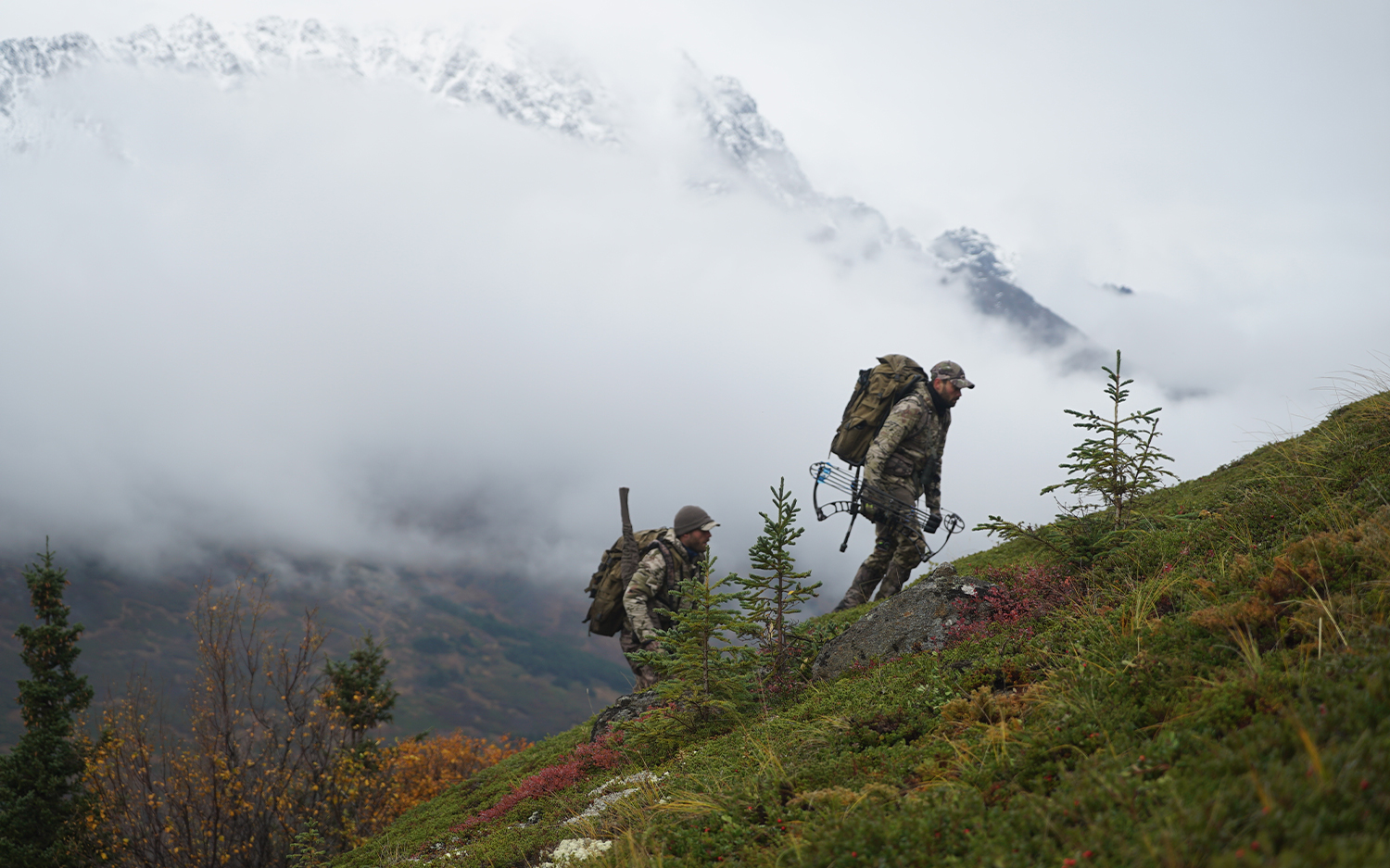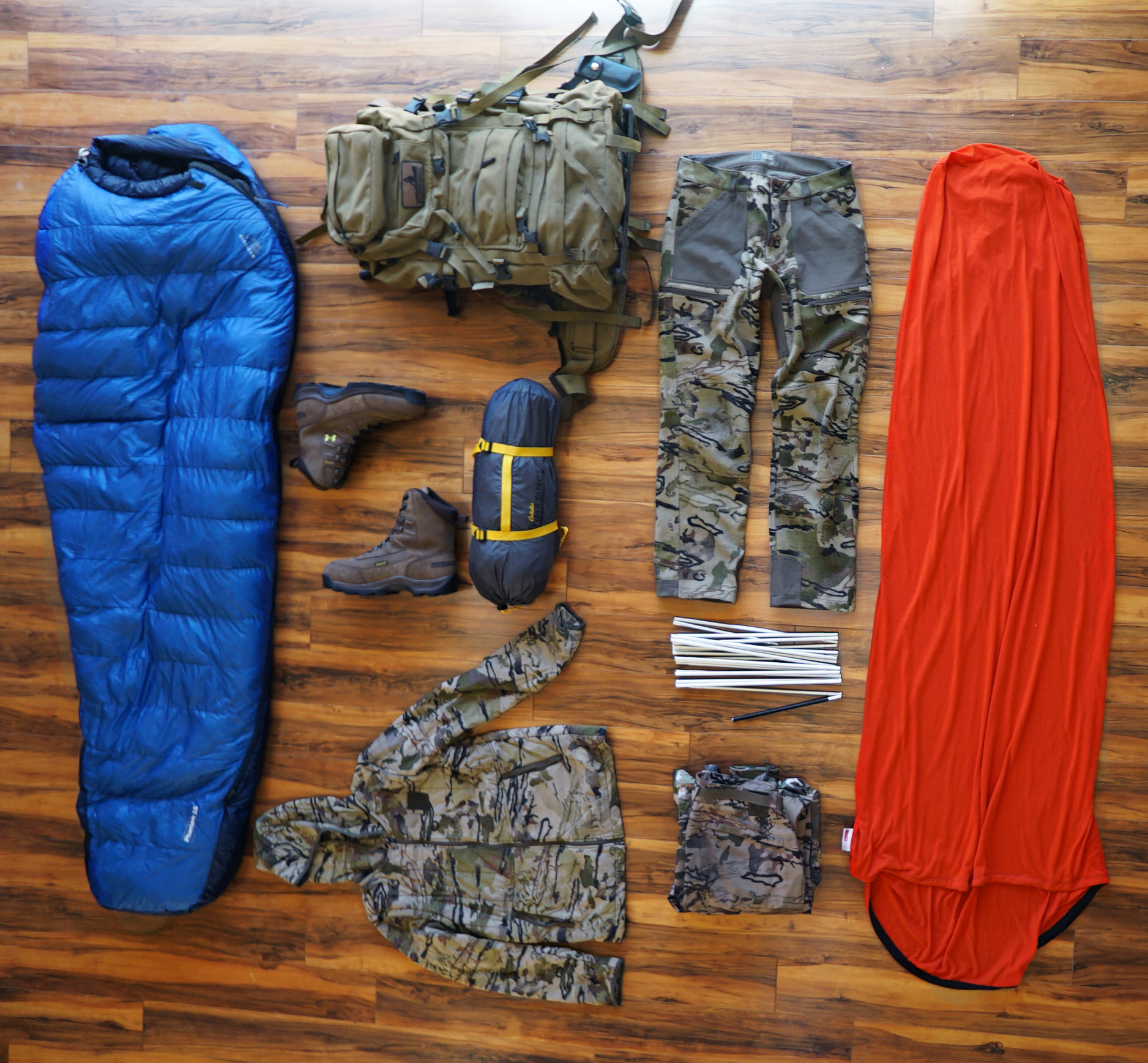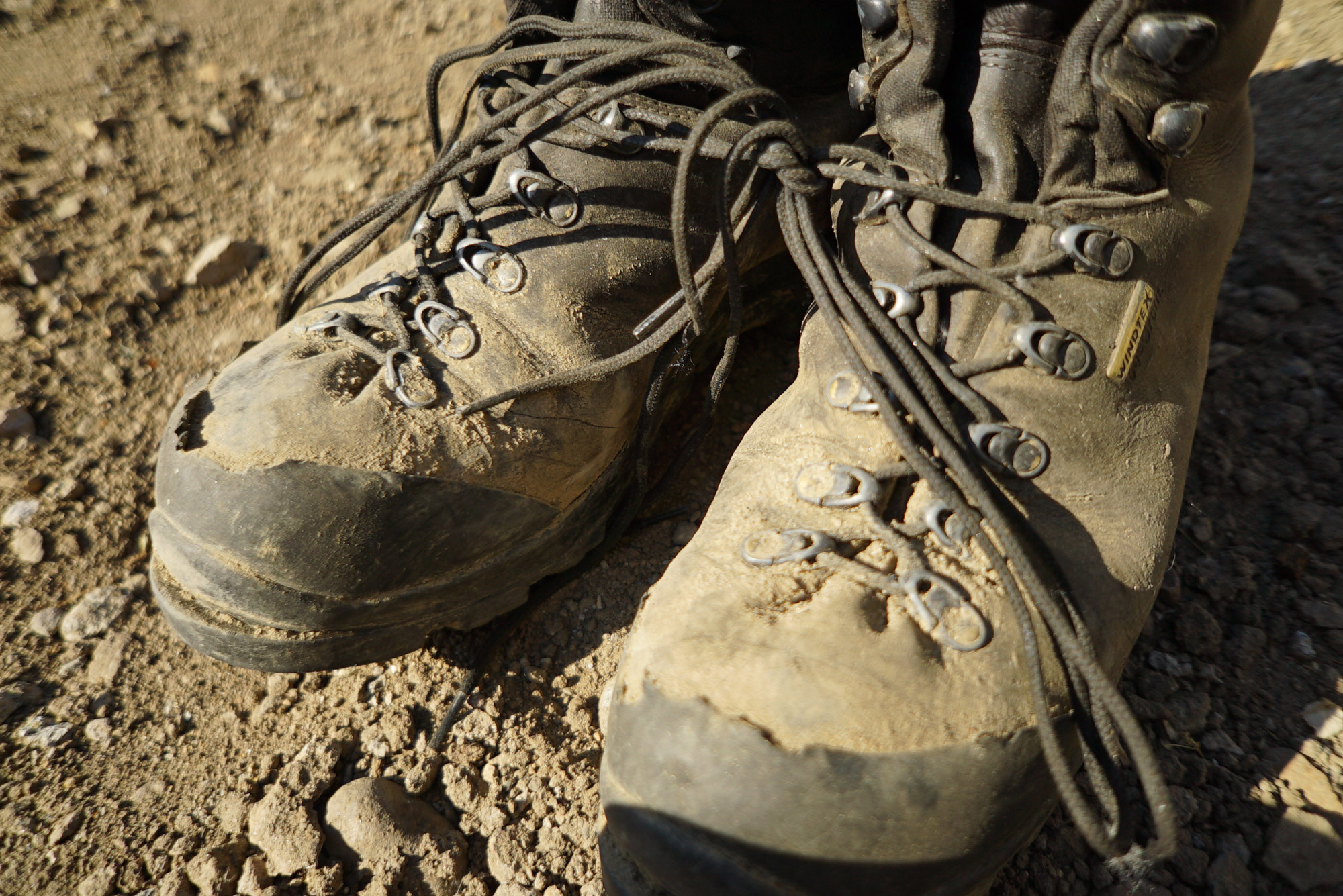
NOTICE: Certain links on this post may earn a commission for Western Hunter Magazine from Amazon or our other affiliate partners when you make a purchase. Thank you for your support.
5 Tips To Protect Your Expensive Hunting Gear
Protect Your Expensive Hunting Gear
Today, there is more amazing outdoor gear on the market than ever before, including advanced textiles and fabrics, mountaineering style boots, waterproof down, and equipment that is lighter, stronger and more efficient than ever before. But this gear comes with a price…a high price. The average cost of a hunter’s setup has never been higher.
For this reason, we want what we buy to last. The initial investment should pay for itself in the long run, right? Yes, but only if it is maintained properly. You could be damaging the longevity of your hunting gear and not even know it. If you want your clothing, sleeping bags, boots, tents, and packs to last, these tips are a must.
The One Wash That Will Ruin Your Gear
Most modern high-quality hunting clothing contains properties in the textiles that allow them to be water-resistant, breathable, quick drying, warm, light, and even anti-microbial. This is achieved through many different technologies. Some of it is woven into the fabric but specialized coatings are sometimes bonded to the material itself.
The number one enemy of all this advanced technology? Fabric softeners. I’ll never forget the first expensive mountaineering pants I bought for hunting (keep in mind this was before performance hunting wear existed). It was a pair of European Scholler material pants made by Mammut. I guided in them daily from September through November in Montana, and wore them in Alaska on sheep hunts. Through rain, snow, and heat, it didn’t matter; they were awesome.
Then one day, they just stopped working well. Water stopped repelling, they felt different…softer…and not right. The culprit was a dryer sheet that ruined a really good run with a pair of pants I got my money out of time and time again.
The fabric-softener dryer sheet reduces static and softens the fabric. This is great for cotton, but advanced textiles lose their ability to work right.
Think back. If you’ve ever had good hunting clothing that used to repel water and dry quickly but then stopped working like it used to, it likely had a run-in with some form of fabric softener.
How To Prevent
Prevention is the best course of action. I leave a note on the dryer to not use dryer sheets if anyone in the house switches my laundry. Instead of a dryer sheet, I suggest using a dryer ball. It cuts the static and has no harmful effects.
Also, remember to keep the heat on low or even air dry. A lower temperature is optimal for many breathable textiles. The correct type of washing and drying will help keep your gear working properly longer.
The Fix
If it’s too late and your gear has come in contact with fabric softeners, then there are a few tech washes that can rejuvenate your clothes. They are wash in and even spray on. This is good to use even if you’ve washed them correctly but they have a lot of usage. The only one I have firsthand experience with is a brand called Nikwax. They have a wash-in waterproofer (TX Direct) as well as a cleaning wash specifically designed for waterproof or water-resistant clothing (Tech Wash). They also carry sprays and products for soft shells and fleece. I’ve used them and they do work.

The Cold Bag
I’ll be the first to admit, I have more money invested in my sleeping bags than I do in the cost of my bed, mattress, and sheets at home. I spend a lot of nights in a sleeping bag and they can be in harsh elements. I want to make sure my bag works properly.
When you buy a sleeping bag for a temperature rating, you need it to perform. Constantly waking up shivering and getting little sleep or relief is a pain, especially if you paid top dollar for a warm lightweight bag that should be plenty comfortable.
I learned firsthand the importance of proper bag storage and care when a bag that used to be amazing no longer insulated like it used to, and I spent many cold nights wondering what went wrong. Being unable to just buy a new bag, I had to tough it out and improvise by combining it with a liner and reflective bivy until I could afford a new bag.
The insulation properties of a sleeping bag work by trapping air within the bag’s fill. What went wrong? A combination of improper storage and care led to the bag no longer being able to work correctly. The fill was permanently compressed and lost its loft. The effect was caused by storing the bag stuffed into the compression sack as opposed to a loose storage bag. This, combined with dirt and grime over the years, didn’t help matters any. Disgusting, I know, but I had no clue how to properly clean a sleeping bag.
How To Prevent
The main way to store a good bag is loose. Most sleeping bags come with a large mesh bag for a reason. It’s because it needs to keep its loft. This is best done by giving the down or synthetic fill ample room. Sure, it takes up more space, but it is absolutely necessary for the bag’s longevity.
Oil from your skin, as well as sweat and dirt buildup, can affect a bag as well, especially down. Even new waterproof down bags can be affected. Washing a sleeping bag isn’t something you want to do after every use, so the solution is to try and keep the bag as clean as possible.
A super light bag liner can help keep the sleeping bag clean and is easy to just throw in a washing machine. They don’t add much weight and are an easy solution, especially because when backpack hunting, you don’t have the luxury to crawl into your bag clean.
Also, try to wear a beanie in your bag. This is ground zero for dirt, oil, and grime.
Finally, if the bag gets wet or damp, air it out, especially during the trip when possible. Aside from eliminating mildew, airing out the bag helps restore loft.
The Fix
If your bag is losing its loft and is dirty or has not been washed in a few years, you may want to consider giving it a cleanup. There are a few rules to follow when washing a sleeping bag. The first is NEVER dry clean it. The chemicals from a dry cleaning will permanently damage the bag. You’ll have to either hand wash it or wash in a front-loading machine.
If you use a washing machine, make sure it does not have an agitator like many top-loading machines do. The agitator can damage the bag. You’ll also need a washing machine large enough to let it tumble.
Wash it with cold or warm water on “delicate” with a non-detergent soap. There are some special sleeping bag soaps available for down and synthetic bags. Just like specialty clothing, stay away from fabric softeners. Use soap sparingly and make sure it all comes out before drying by running it through another rinse soap free.
Dry on low in a large dryer. This may take a couple of cycles. When the bag is near dry, add a few tennis balls or something similar to help break up the clumps. It’s important to get the fill well separated and dry. Once it’s dry, hang it for a few days to make sure all moisture can escape before storing. Also, check and make sure there are no lumps left in the bag.
Because the process of washing a bag is so involved, you don’t really need to do it that often; every few years is usually enough. I only wash it when I have to. There are a few commercial services that clean sleeping bags, but they have to be shipped out and generally take a few weeks.

Boots for All Weather
A good pair of hunting boots is no small purchase. Some boots take about 50 miles to break in. With that kind of effort, you want whatever boots you have to last.
As a guide, I hear people complain all the time about their boots wearing out. Mainly, they are no longer keeping the water out like they used to.
Leather boots with Gore-Tex or some other form of waterproof breathable membrane are only waterproof to a certain extent. The liner may prevent water from getting in, but once the leather is soaked, it can still make for a bad day.
Leather is a lot like wood. Because it’s a natural product, it dries out, cracks, and splits without proper care. Maintaining boot performance by using good care is severely underrated!
The first time I waxed my boots, it really opened my eyes. I was on a two-week trip into the Alaska Range and was disappointed because my boots were taking on water. I came across some Sno-Seal and gave it a try. It worked better than I could’ve hoped. My feet stayed dry on a really wet hunt. From that point on, I constantly wax my boots before a hunt.
How To Prevent
To keep your boots from falling apart or even to just keep them dry longer, waxing and sealing your boots is a must. I wax both my leather and even non-leather boots before each hunt. This will condition the boot and help keep water off. Even with a waterproof membrane, a natural wax will keep the leather of the boot outside of that membrane from getting soaked.
The wax also keeps the leather conditioned and hydrated. Things like dirt, mud, and exposure will draw moisture out of the leather, degrading it at a much faster rate. Conditioning and sealing the boot will help slow this process, giving you more time per pair.
Sno-Seal or Kenetrek Boot Wax are the two I use most often. I rub the boot down with the wax and then let it sit for a bit where it is warm. This allows the product to soak into the material.
The Fix
Maintaining them is the best way to make boots last, but if it’s already too late, don’t fear; it’s never too late to give them a once-over with the wax. If the toe guard or rubber rand is starting to go, consider repairing it with shoe goo.
My brother fixes the toes of his hunting boots by taking them to a spray-on bedliner place and having them spray the toes to keep them from tearing. Another option is coating them with a rubber-like polyurethane coating.
Also, consider wearing a pair of gaiters. If your boots aren’t repelling water like they should, gaiters will deflect a lot of water from entering the lacing area.
The Leaky Roof
Nothing is worse than when your three or four-season tent encounters rain. The last time you used it, it was fine, but now all your gear is wet. That’s not a fun experience, especially when you paid over $400 for a tent to keep you dry. The problem is that tents are stitched, and anywhere there is a stitch, that technically means there is a hole. These holes are not a problem the first few times you use the tent, because they’re often coated to keep water out.
However, over time, wind, UV exposure, and weather affect the tent and the seams are no longer what they used to be. Water will start to seep through. When this starts, it may be nearly impossible to figure out exactly where it is coming from.
The Fix
Seam sealing your tent is the best way to keep the tent from leaking. Even on a new tent, I recommend sealing all seams before its initial use. Tents that have a seam tape can be sealed on the edge of the tape. On older tents, where the seam tape is coming off, the tape can be removed and a liquid seam sealer used in its place.
It’s on Your Back
Even a great pack needs a little looking after. They haul your gear and you rely on them, not to mention that a well-built pack should last through years of abuse.
The saying “a chain is only as strong as its weakest link” holds true for packs, and for most packs, that weak link is probably the zipper. All packs have them, and when they go out, it’s a pain to replace. I’ve had various zippers go out on packs and it wasn’t until recently that I figured out why.
While driving to and from my camp to my hiking spot on an ATV in the Nevada desert, I noticed that my soft-sided bow case had lost the operation of the zipper by getting off track and my pack was starting to go as well.
I put two and two together and realized that the dust from the road was causing the zippers to get dirty and ultimately fail - something that had happened to me with an expensive pack a few years back where the zipper was the only way to close this particular pack.
The Fix
Zippers can be cleaned before they untrack, and lubricated with a form of wax or any type of zipper lubricant (I didn’t know that existed until I bought a soft-sided Yeti and it came with it). Candle wax or even your boot wax can be used to protect the pack’s zipper from dust and potentially popping loose. It seems weird that dust is the culprit, but I’ve seen it time and time again.

